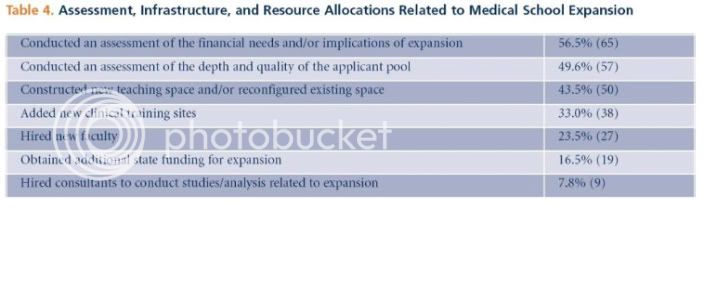- Joined
- Apr 6, 2008
- Messages
- 1,667
- Reaction score
- 12
Given all the rumors going around SDN about the pre-med pipeline exploding, I thought it would be a good idea to finally get some facts out. Below I am including a set of graph that are from AAMC itself. Here are some points:
International Medical Graduates (IMGs) are not at risk of losing all their residency spots any time soon. While some think that AAMC has this agenda to artificially eliminate all IMGs by turning over their residency spots to US graduates, here is what AAMC says:
In other words, AAMC actually counts IMGs as part of its goal to increase med school graduates by 15% by 2015 or so.
In terms of residencies, AAMC gives two options: 1.if the residency programs expand in a robust manner, then the only decrease in spots will be in IMGs from 6500 to 6000. 2. If the residency expansion is moderate, then IMG spots will decrease from 6500 to 4100 to give up those extra spots for the DOs. When you consider that most IMGs go into primary care, this makes you wonder whether DOs will be forced into these primary care residencies in the future. And by future, were talking about as early as 2016. Certainly, if this happens, it will be bad for both DOs and IMGs. Losing 40% of their residency spots might force many to reconsider going to the Caribbean schools.
I am not sure what is the likelihood of only moderate growth in residencies. While some think that AAMC doesnt have any plans to increase the number of residencies, that is not true. If you look at Table 4, youll see that already 33% of medical schools are adding new residency programs. Given that the new medical schools are not even going to be operational since 2015, this 33% is very encouraging and might mean that the robust residency growth will occur, instead of the moderate one.
Also, while there are going to be about 10-15 new medical schools added by 2015, their average class size is going to be around 100 or less not the 150 or more we might have assumed (Table 2).
Another thing to note is that unlike what is claimed in this forum, physician work hours have barely increasing (Figure 44). In fact, AAMC says that the newer doctors work less hours than the veterans because the newer generation has more interests and seeks a more balanced life.
Note also that since 1980 the number of medical graduates has not changed at all (Figure 2). Yet many students here claim that the number of med students has been steadily increasing. You will probably not see any real increases in number until 2007. Even then, it is not going to be much compared to historical data. If the numbers of graduates increased the same way as it did between 1960 and 1980, then today we would have to have over 40,000 med school graduates, not 17,000. Even after all the increases over the next 10-20 years, the number of graduates is still going to be less than half than what is was supposed to be had it continually grown from 1980 yet the demand has been accelerating.
I hope the graphs below will speak for themselves and I hope some of the skeptics get to see them too. Its hard to imagine any other profession having as much demand as the medical profession, no matter how pessimistic someone is.
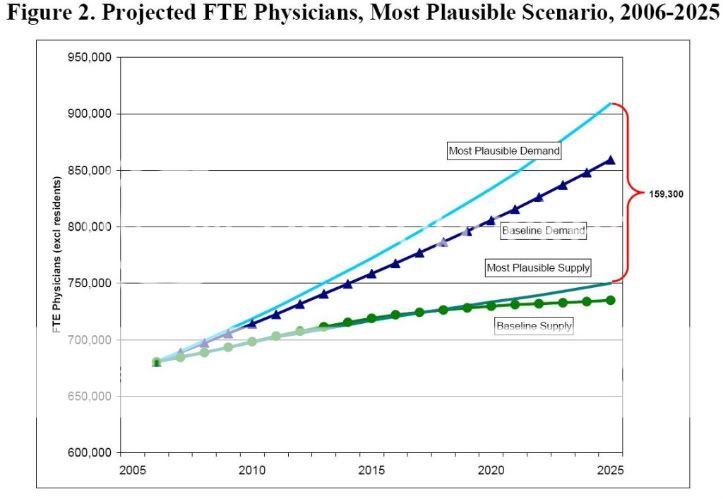
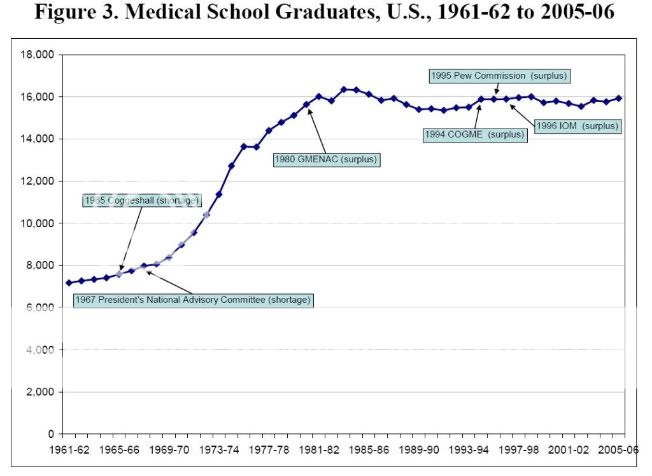
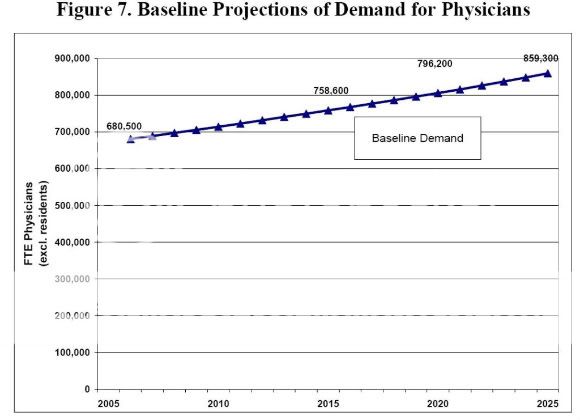
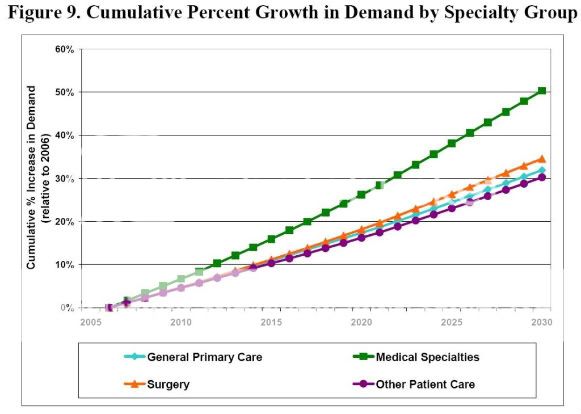
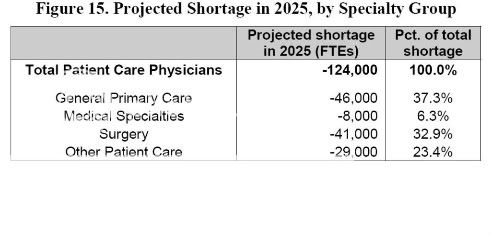
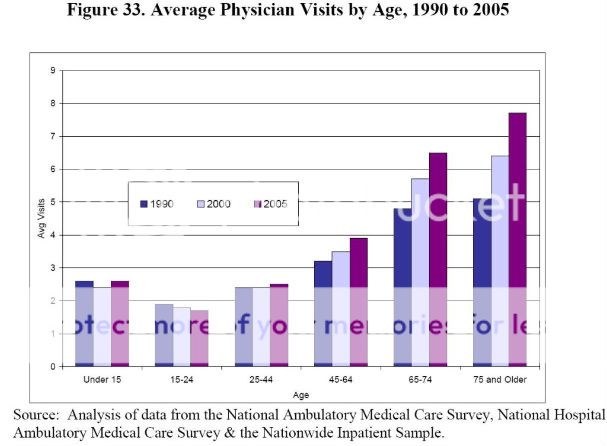
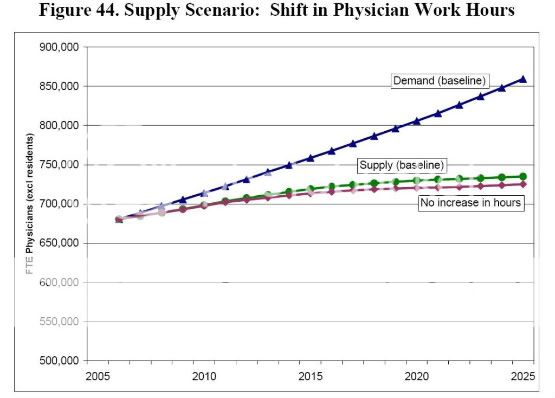
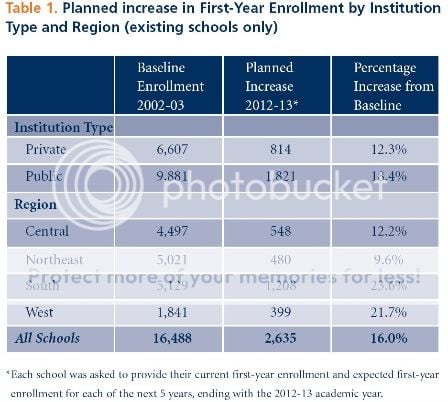
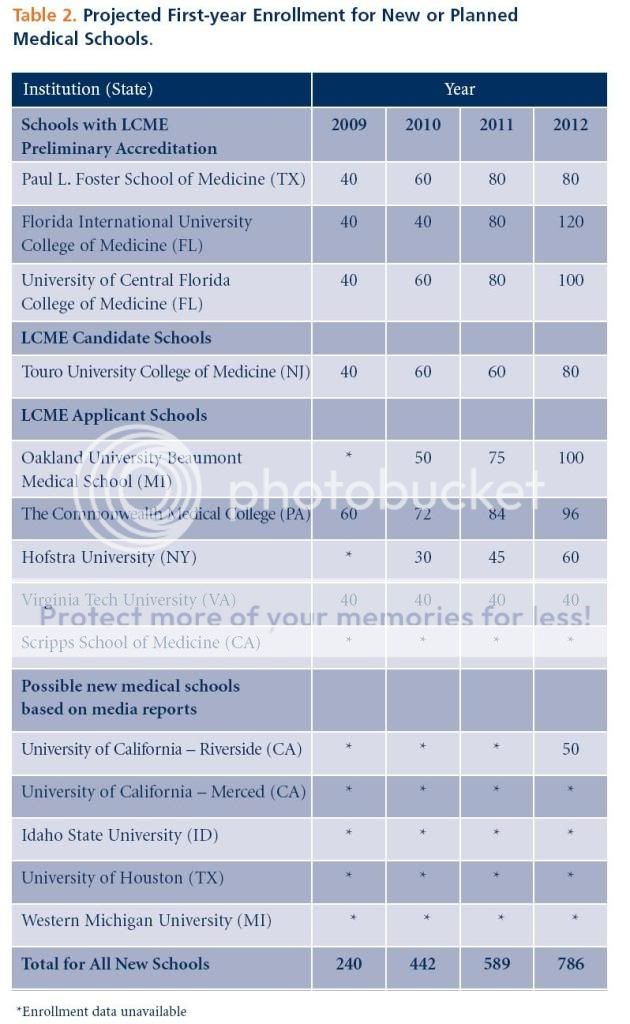
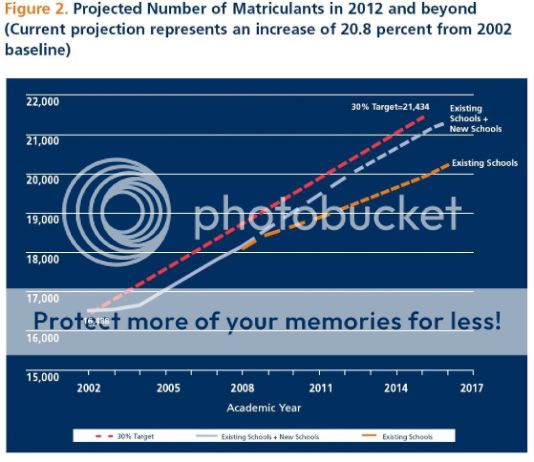
International Medical Graduates (IMGs) are not at risk of losing all their residency spots any time soon. While some think that AAMC has this agenda to artificially eliminate all IMGs by turning over their residency spots to US graduates, here is what AAMC says:
- if the flow of IMGs slows significantly, then any shortages that develop may be even more severe than those described in this report.
- Thus the components of the projected 12% net growth in total number of active physicians from 2006 to 2025 includes an additional 28,900 USMDs (6% growth), 32,900 DOs (79% growth), and 18,900 IMGs (12% growth) (Figure 5).
In other words, AAMC actually counts IMGs as part of its goal to increase med school graduates by 15% by 2015 or so.
In terms of residencies, AAMC gives two options: 1.if the residency programs expand in a robust manner, then the only decrease in spots will be in IMGs from 6500 to 6000. 2. If the residency expansion is moderate, then IMG spots will decrease from 6500 to 4100 to give up those extra spots for the DOs. When you consider that most IMGs go into primary care, this makes you wonder whether DOs will be forced into these primary care residencies in the future. And by future, were talking about as early as 2016. Certainly, if this happens, it will be bad for both DOs and IMGs. Losing 40% of their residency spots might force many to reconsider going to the Caribbean schools.
I am not sure what is the likelihood of only moderate growth in residencies. While some think that AAMC doesnt have any plans to increase the number of residencies, that is not true. If you look at Table 4, youll see that already 33% of medical schools are adding new residency programs. Given that the new medical schools are not even going to be operational since 2015, this 33% is very encouraging and might mean that the robust residency growth will occur, instead of the moderate one.
Also, while there are going to be about 10-15 new medical schools added by 2015, their average class size is going to be around 100 or less not the 150 or more we might have assumed (Table 2).
Another thing to note is that unlike what is claimed in this forum, physician work hours have barely increasing (Figure 44). In fact, AAMC says that the newer doctors work less hours than the veterans because the newer generation has more interests and seeks a more balanced life.
Note also that since 1980 the number of medical graduates has not changed at all (Figure 2). Yet many students here claim that the number of med students has been steadily increasing. You will probably not see any real increases in number until 2007. Even then, it is not going to be much compared to historical data. If the numbers of graduates increased the same way as it did between 1960 and 1980, then today we would have to have over 40,000 med school graduates, not 17,000. Even after all the increases over the next 10-20 years, the number of graduates is still going to be less than half than what is was supposed to be had it continually grown from 1980 yet the demand has been accelerating.
I hope the graphs below will speak for themselves and I hope some of the skeptics get to see them too. Its hard to imagine any other profession having as much demand as the medical profession, no matter how pessimistic someone is.











